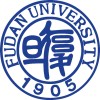
Edaravone Dexborneol for Treatment of Acute Ischemic Stroke With Endovascular Therapy in Extended...
StrokeIschemicTo explore the safety and efficacy of edaravone dexborneol for patients of acute ischemic stroke received endovascular therapy in extended time windows.

Rehabilitative BCI in Acute Ischemic Stroke
StrokeAcuteIn order to explore the role and expound the mechanism of rehabilitative brain computer interface (BCI)-based training (referred to as the Walk Again Neurorehabilitation protocol) in neurofunctional reconstruction in acute phase of cerebral infarction, the investigators choose non-invasive BCI to study lower limb function of patients with acute cerebral infarction. The investigators evaluate lower limb function, the influence on the central brain functional network and relevant immuno-inflammatory indicators, so that the investigators can explore the therapeutic effect and mechanism in the acute phase of cerebral infarction and provide theoretical bases and feasible guidances for the treatment of post-stroke dyskinesia.

Evidence-based Evaluation of TCM Key Syndrome Differentiation and Treatment for Acute Ischemic Stroke...
Ischemic StrokeThe main purpose of this trial is to determine whether Chinese medicine (CM) for eliminating phlegm and clearing heat (EPACH) recipe continuously with nourishing Qi and activating blood circulation (NQABC) recipe, oral within 72 hours of symptom onset, improves the 15-day neurologicl deficits in participants with acute ischemic stroke.

Autologous Hematopoietic Stem Cell Transplantation in Ischemic Stroke
StrokeThe purpose of this study is to evaluate the safety and efficacy of autologous peripheral hematopoietic stem cell transplantation in ischemic stroke.

Combined tDCS+PNS After Acute Stroke
Acute Ischaemic StrokeRecent work showed that application of peripheral nerve and cortical stimulation independently can induce 10-15 % improvement in motor performance in patients with chronic stroke. The purpose of this study was to compare in post-stroke hemiplegic patients the effect on motor recovery of one session of anodal transcranial direct current stimulation to the ipsilesional primary motor cortex (M1) combined with a peripheral radial nerve electrical stimulation (rEPNS) to the paretic hand repeated 5 successive days with the effect of the same peripheral nerve stimulation combined with sham tDCS. Design: randomized, double-blind, parallel controlled clinical trial. Patients eligible for the study: Acute ischaemic stroke Primary outcome measure: Jebsen Taylor test Secondary outcome measures Nine peg hole test Hand tapping grip and wrist force Cortical excitability of Ipsilesional M1(TMS) Follow-up: 30 days

Manipulation of Arterial Pressure in Acute Ischemic Stroke
StrokeAcuteThis is a controlled clinical trial among non thrombolysed acute ischemic stroke patients to determine the effects of three levels of arterial pressure on death and neurological disability. After the admission in the vascular unit of the Emergency Department the patients are randomized to maintain during the first 24h the Systolic Arterial Pressure in tree levels of pressure: 140 to 160 mmHg; 161 to 180 mmHg and 181 to 200 mmHg. The end point of the study is the Modified Rankin score and mortality in three month after the discharge.

Effectiveness and Safety of Angongniuhuang Pill on Restoring Consciousness for Patients Who Have...
StrokeAcute Ischemic StrokeThis study will determine if Angongniuhuang Pill (Composed of Niuhuang, Yujin, Xijiao, Huangqin, Huanglian, Xionghuang, Zhizi, Zhusha, Bingpian, Shexiang, and Zhenzhu) will have a better effect in restoring consciousness for patients who have suffered from an acute ischemic stroke. The study is designed to look at both consciousness level and overall recovery and recovery of motor function, for example muscle strength and coordination.

Paradigm I Clinical Trial: Study of the PFX Closure System in Subjects With Cryptogenic Stroke,...
Patent Foramen OvaleThe primary objective of this study is to demonstrate the safety of the PFX Closure System when utilized for patients with patent foramen ovale (PFO) suffering from cryptogenic stroke, transient ischemic attacks or paradoxical embolism.

Study to Determine The Effect of a Drug Called Neupogen on Stroke Recovery
Ischemic StrokeCirculating bone marrow and blood vessel precursors home in to sites of ischemia and aid regeneration of injured tissue Increasing the number of circulating precursors will improve in regeneration of damaged brain following ischemic stroke.

LOTUS: Global Acute Stroke Study Utilizing Penumbra System
StrokeIschemicThe primary objective of this study is to demonstrate safety and effectiveness of the Penumbra System in a population with acute ischemic stroke (AIS) secondary to intracranial large vessel occlusion (LVO).
